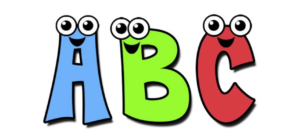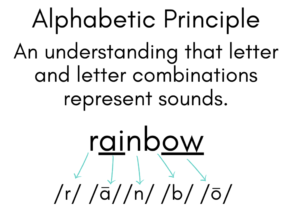The Alphabetic Principle
As we learnt in Module 1, children’s reading development is dependent on their understanding of the alphabetic principle. The idea that letters and letter patterns represent the sounds of spoken language. Learning that there are predictable relationships between sounds and letters allows children to apply these relationships to both familiar and unfamiliar words, and to begin to read with fluency.
Phoneme awareness is essential for learning and using the alphabetic code
Students who can take segment words into sounds, recognize their identity, and blend them together have the foundation skill for using the alphabetic principle (Liberman, Shankweiler, & Liberman, 1989; Troia, 2004).
Without phoneme awareness, students may be confused by the print system and its relationship with spoken word. Students who lack phoneme awareness may not even know what is meant by the term sound. For example, if a student is asked, what is the first sound in the word dog, they may say “Woof-woof!”
Listen to Dr Louisa Moates explain about the need for understanding the Alphabetic Principle (Reading Rockets 2014).
https://youtu.be/uQkQw8QqaJU?si=b9IjT2a5eevDqxju
Additional links and resources:
The Alphabetic Principle | Reading Rockets
What Is The Alphabetic Principle?
The Alphabetic Principle: Paving the Way to Learning to Read | Reading Simplified
The Alphabetic Code
The alphabetic code is the set of correspondences that exist between the smallest units of sounds in English (phonemes) and the letter/letters that represent those sounds (graphemes).
It has also been described as the framework that shows how the 44 sounds of English are represented by letters and letter combinations (graphemes). Beginning readers need to learn the code so that they can apply it when encoding (spelling/ writing) and decoding (reading).
Additional links and resources:
The English alphabetic code (The Literacy Hub)
The Alphabetic Code Made Easy (Stephan Parker, 2021)
Alphabetic Code Charts
Alphabetic Code Charts may be helpful for a variety of people and purposes. There are many alphabetic code charts attached to the reading programs that schools may choose to engage with.
I have attached a link to the following free to access charts. FREE Code Charts
If you wish to learn more about these resources you can Listen to Debbie Hepplewhite from Phonics International, explain the purpose and range of Alphabetic Code charts for English. https://youtu.be/XELncIpMIpc


